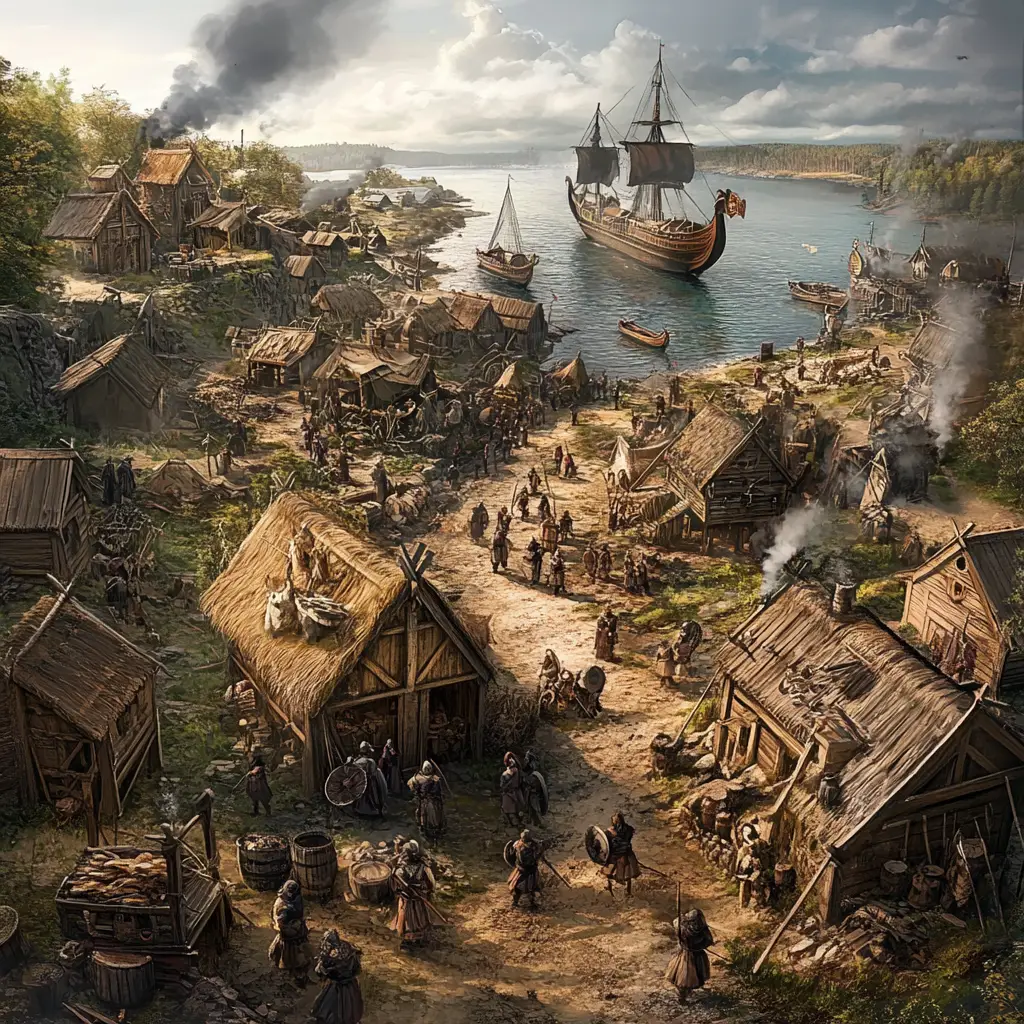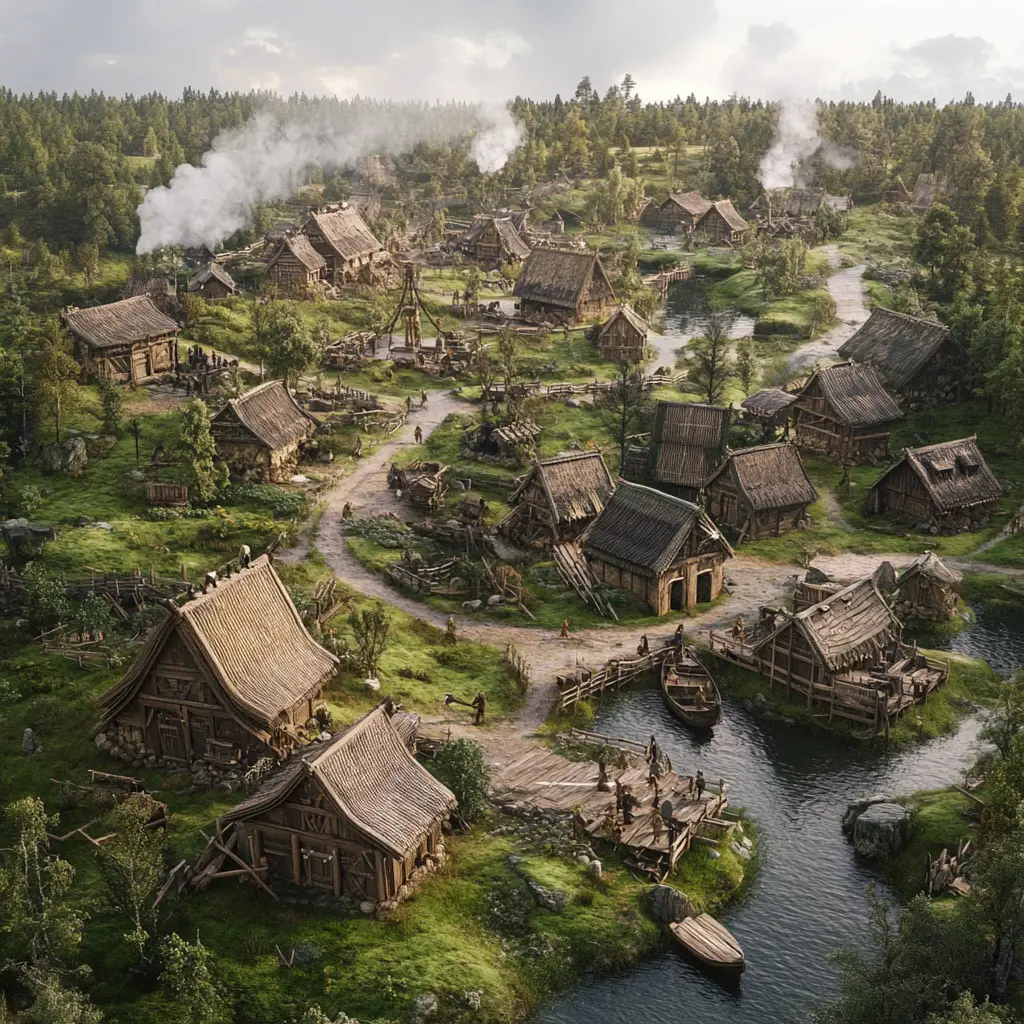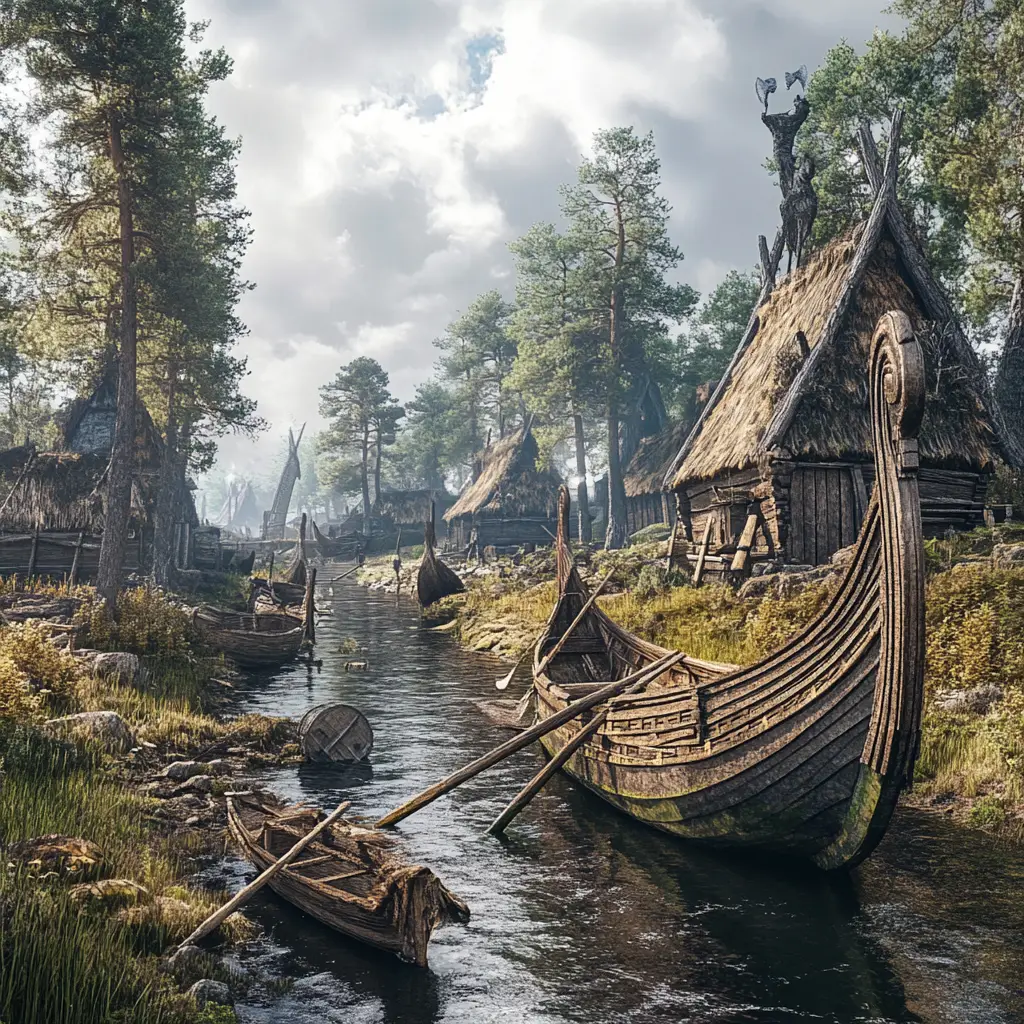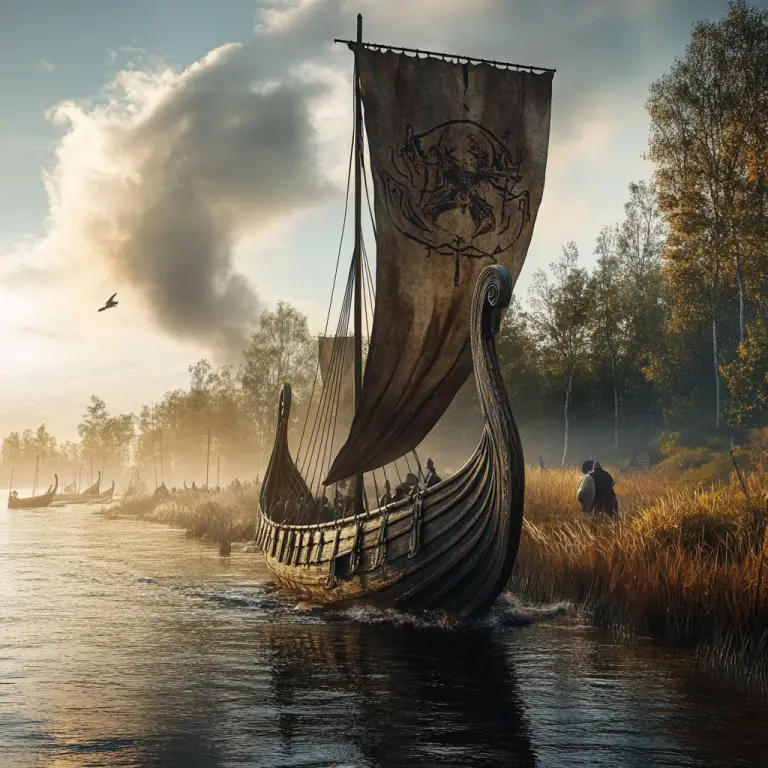Birka is an important historical site in Sweden, located on the island of Björkö in Lake Mälaren, near Stockholm. It was one of the most significant Viking Age trading centres and is considered a UNESCO World Heritage Site due to its archaeological importance.
Viking Trading Hub: Birka flourished from the 8th to the 10th century and served as a major trading port where goods from various parts of Europe, the Middle East, and even as far as Asia were exchanged. It is often considered one of the first urban settlements in Sweden and an essential centre for trade between the Scandinavian world and other parts of Europe and beyond.
Strategic Location: Birka was strategically located in Lake Mälaren, offering access to both inland and maritime trade routes. Its location made it a central meeting point for merchants, craftsmen, and people from various cultures.
Archaeological Significance: Numerous Viking-era artifacts have been discovered at Birka, including tools, jewellery, weapons, and coins. The site also includes graves, which offer a wealth of information about Viking burial practices and beliefs.
Viking Burial Grounds: The site includes both grave mounds and inhumation graves, where the remains of Vikings, many of whom were buried with rich grave goods, have been found. These finds provide important insights into Viking society, their rituals, and their material culture.
Birka’s Decline: The settlement began to decline in the 10th century, likely due to a combination of changing trade routes, shifts in political power, and environmental factors. By the end of the Viking Age, Birka was largely abandoned as a trading hub.
Historical Significance: Birka was mentioned in several historical texts, including the writings of the Arab traveller Ibn Fadlan and the Swedish King, Anund Jacob. These sources highlight Birka’s role in the broader Viking world, particularly as a cultural and economic nexus.
Birka Today
Today, Birka is a popular tourist destination. The island is home to a museum, which houses many of the artifacts found at the site, as well as exhibitions about the Viking Age. Visitors can also explore the ancient burial mounds, the remains of Viking buildings, and other archaeological features on the island. Guided tours provide insights into the daily life, trade, and rituals of the Viking Age.
Birka stands as a testament to the advanced and interconnected nature of Viking society, showcasing their role as traders, warriors, and explorers. It also gives us a glimpse into the world that shaped much of Scandinavia’s history.



